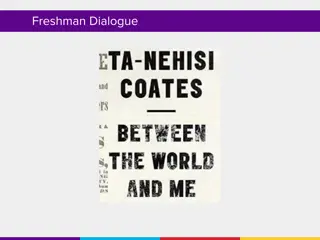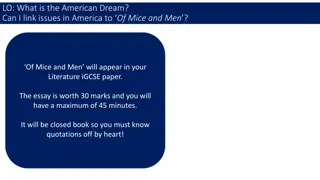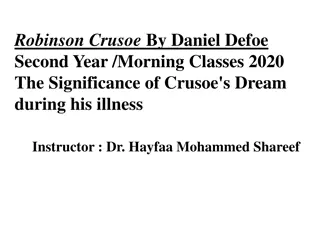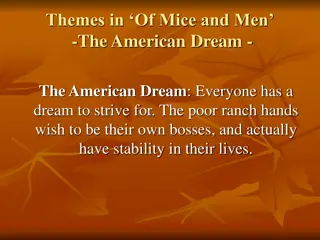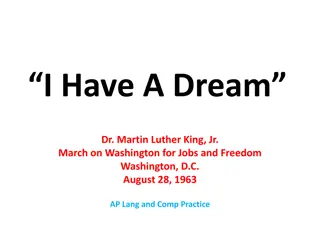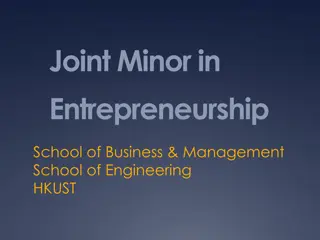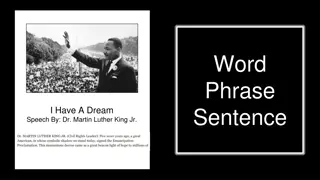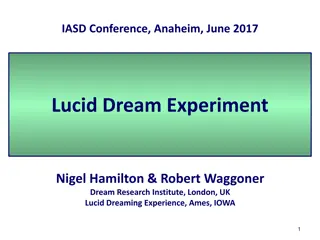I have a dream… OMAM
Explore the importance of dreams in John Steinbeck's novels with a focus on the American Dream. Understand how Steinbeck uses dreams to depict societal changes in the USA during the 1930s, emphasizing the shift away from old ideals. Learn how to structure your essay effectively and engage with the contextual aspect to excel in your literary analysis.
Download Presentation

Please find below an Image/Link to download the presentation.
The content on the website is provided AS IS for your information and personal use only. It may not be sold, licensed, or shared on other websites without obtaining consent from the author.If you encounter any issues during the download, it is possible that the publisher has removed the file from their server.
You are allowed to download the files provided on this website for personal or commercial use, subject to the condition that they are used lawfully. All files are the property of their respective owners.
The content on the website is provided AS IS for your information and personal use only. It may not be sold, licensed, or shared on other websites without obtaining consent from the author.
E N D
Presentation Transcript
I have a dream OMAM Friday, 11 October 2024
Essays for exams: Lit Usual essay stems:
We can rephrase these questions If we do this, we are forced to engage with AO4 : CONTEXT which is weighted at 50% of the available marks. To miss this element will seriously affect your overall marks. Why does Steinbeck present the theme or character (X) in this way in a novel written at this time.
Q: In what ways are dreams an important theme in this novel? 1 2 3 4 We know all the characters dream, but the question asks for so much more than a simple recount of the key dreamers and their dreams. Remember that we need to engage with DREAMS in a contextual manner for USA in 1937. Remember that the intertextuality of the title will be an enormous help in this question. Remember that we can link dreams to Steinbeck s purpose in writing the novel in the first place.
Structure the essay to help the examiner to relax. 01 02 03 Paragraph 1: A contextual introduction linked to the question. Paragraphs 2-79: A series of arguments establishing how the theme is presented as vital in terms of the message Steinbeck is giving. Final Paragraph: A conclusion to bring it together (short)
Steinbecks trilogy of novels written in the late 1930s is a response by a socialist writer to the manner in which the USA had failed to cope with the Crash and the depression which followed (and specifically, the dustbowl) in a caring and socially responsible manner. The American Dream had already moved away from the Pioneer virtues of hard work and self sufficiency (living off the fatta the lan ). Steinbeck wishes to show that in the new USA , the American Dream is almost unrecognisable. The intertextuality shows us this. 1: Intro The new short cut dreams such as an acting career are similarly short lived. There are no short cuts. Dreams are therefore used to illustrate the differences between the characters who inhabit the ranch and their attitude eto the country in which they live.
Arguments: 1: American Dream: George and Lennie embody this dream the farm dream is utterly typical hard work, freedom, self- sufficiency. On the first appearance : The tone echoes a religious ceremony, suggesting the importance of the dream. Self sufficient Pioneer dream but George no longer believes it to be possible to achieve.
Most characters have never seen anyone succeed or tell tales of men who try but fail Characters split into 2 groups believers such as Lennie, Candy and even Crooks for a short time, and non-believers such as Crooks (again),CW, Curley, Carlson and even Slim. George is ambivalent for most of the text he views this dream as one might view a bedtime story Lennie s comforter. Time gives hope, but underlying this hope is the intertextuality of Burns poem the best laid schemes o mice and men gang aft agley Steinbeck suggests that in this damaged country, such dreams are doomed to fail even if they seem to have solid foundations. American Dream 2
Other dreams The short cut to celebrity dream. In the 1930s Hollywood exploded with quantities of escapist movies designed to distract from the reality of the suffering of many. CW has a dream which is not unusual, though her nasal, brittle voice will not help She seeks not success and respect for her hard work, however, but something else Her dream is a new type of dream and equally unlikely to come true. Steinbeck suggests that not even the new type of dream which has grown up in this new century can be relied upon to help.
More Dreams? Crooks joins the pioneer dream briefly, only after Candy has provided money which might bring it to fruition. Even this is a vain hope: the farm may well have been sold long since and even if not, they do not have the required sum. George is caught up in the excitement almost despite himself Steinbeck needs us to sympathise with this group so that we feel the pain of the destruction of the American Dream for ourselves.
Lennie is killed in a moment of sheer joy as he imagines his unattainable dream. Slim and George pair up, giving some hope that the Pioneer spirit may win out in the end. The new men Carlson and Curley are bemused. In this world, a world devoid of hope and of dreams, they simply do not understand the manner in which dreams give hope and inspiration, although, this hope and inspiration will always be destroyed by the grim reality of life. End of the tale
In what ways are dreams an important theme in this novel? Conclusion Steinbeck uses dreams to show both the constant human trait of resilience and hope and also to show how his country, once sustained by a Pioneer dream based on hard work and self sufficiency is now damaged goods - a place in which the Pioneer dream has been replaced by wishes to find short cuts to success, and success is now judged by wealth and celebrity. Even these dreams are only as solid as the film on which they are created. IN the face of the new Darwinistic society exemplified by Curley and Carlson, dreams stand no chance. They may be comforting, but like Burns mouse, the dreamer is always doomed to be disappointed.
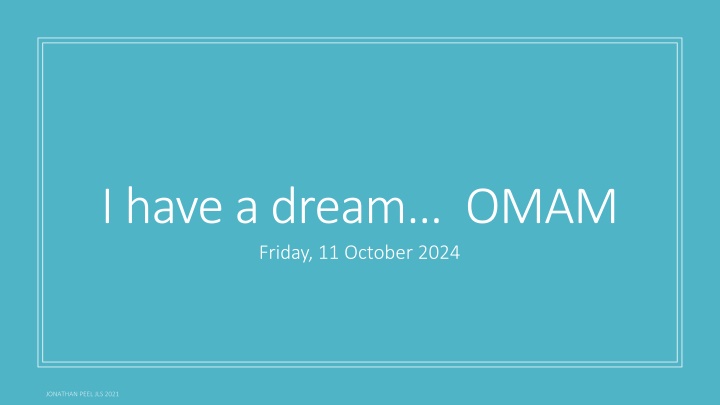





![❤Book⚡[PDF]✔ Spaceplane HERMES: Europe's Dream of Independent Manned Spaceflight](/thumb/21517/book-pdf-spaceplane-hermes-europe-s-dream-of-independent-manned-spaceflight.jpg)






